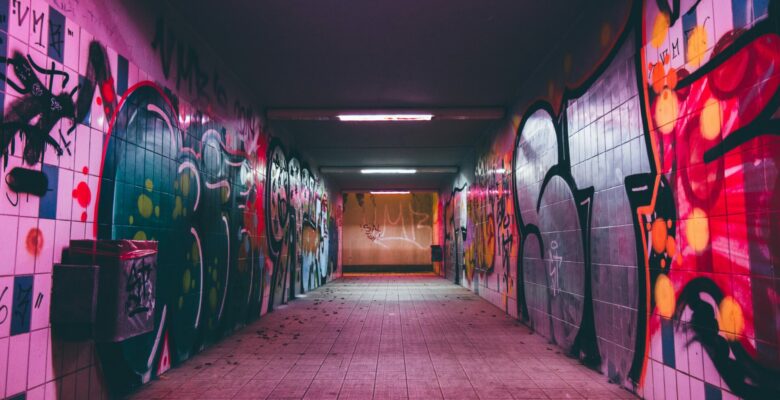The United States is experiencing and unprecedented surge in gang activity. Unfortunately, the Department of Justice data regarding gangs and their criminal activity is sparse and dated. The most recent report published in 2011 entitled the, National Gang Threat Assessment, noted that gangs were responsible for “an average of 48% of violent crimes in the United States”.1 This absence of accurate reporting prompted Congress to introduce H.R. 3769, “Gang Activity Reporting Act of 2023”, which was introduced by Representative Ashley Hinson (R-IA).1 As a result of the dearth of current statistics, it is difficult to find specific information on gang-related arrests, the number of juveniles involved/arrested in gang-related activity, and even more important the specific gang-related activities such as child sex trafficking, gun, drug, and/or human trafficking activities. At least 12 different gangs have been identified as being active in Colorado as of March 2023. These include: Tre Tre Crips, Tre 31st, Tre Duce, Tre Tre Finest, Rollin’ 30s, the Bloods, Gallant Knights Insand, 303 Mafia, North Side Mafia, Inco Boyz, 18th Street gang and 211 Crew.2
Examples of gang-related activities include human trafficking, prostitution, drug trafficking, white collar crimes, even infiltration of our criminal justice agencies and governmental agencies.
Some 33,000 violent street gangs, motorcycle gangs, and prison gangs are criminally active in the U.S. today. Many are sophisticated and well organized; all use violence to control neighborhoods and boost their illegal money-making activities, which include robbery, drug and gun trafficking, prostitution and human trafficking, and fraud. Many gang members continue to commit crimes even after being sent to jail.3
There are some sophisticated barriers that prohibit identifying and tracking gang-related criminal activities. Gangs, especially the larger ones, have become savvy in the usage of social media platforms and online sites, which further enables them to coordinate their criminal activities.
Gangs are keeping up with the digital revolution going into 2022. 71% of all gang members admit to using social media. Furthermore, another 20% state they even operate a website or a social media page.4
The growth in cryptocurrency provides a form of currency that is “anonymized” which makes it almost impossible to track as it hides any identifying information. In fact, “Bitcoin appears to be the cryptocurrency of choice for criminal groups…”5
There are some differences between traditional pimping and the dynamics of gang-related sex trafficking. Pimps are motivated by money. They will travel the state or country for financial gain, seeking the best market for their “game”. Gangs on the other hand are motivated by power. Gangs tend to run their criminal enterprises in one location. Pimps seek status and respect from other pimps for the way they run the “game”. Gangs rely on proceeds from multiple criminal enterprises. They often seek respect and status for their gang “family” from other gangs, often through violence and intimidation (e.g. threats and terrorizing).6
To remain in business, organized crime groups such as drug cartels must have strong leadership, codes of loyalty, severe sanctions for failure to abide by these codes, and a level of entrepreneurial expertise that enables them to accumulate and invest proceeds from drug sales. In contrast, “most street gangs are only loosely structured, with transient leadership and membership, easily transcended codes of loyalty, and informal rather than formal roles for the members.” Very few street or youth gangs meet the essential criteria for classification as “organized crime.”7
That said, identifying the perpetrators and their modus operandi may appear very similar and difficult to differentiate. Therefore it is imperative that the public be aware that Domestic Minor Sex Trafficking (DMST) is increasingly becoming a gang-related activity and is occurring in communities across the country.
While federal and state governments have taken concrete steps to combat child sex trafficking, they have not adequately recognized the increasing role of gangs in this illegal industry. This lack of recognition has inevitably led to a failure to provide specific, targeted assistance to minors who are victims of gang-related exploitation, and furthermore, has failed to thwart the victimization of new young girls. Some states continue to funnel victims into criminal and juvenile justice systems unable to adequately meet the needs of trafficking victims, particularly those associated with gangs.8
So why are you telling me this, what can I do as a concerned citizen?
Law enforcement and prosecutors must be held accountable to attack and fully prosecute the gangs or criminal organizations that traffic children, not the individual, not the child/minor. All of us are capable of being advocates for victims/survivors of DMST. We can work with our state legislators to advocate for evidence-based, survivor centered policies to address gang-related DMST. One organization that is having an impact in this area is Shared Hope International. Shared Hope Institute for Justice & Advocacy offers training, research and advocacy to equip stakeholders such as law enforcement, juvenile and criminal justice agencies, policy makers and others, to help with trafficking reforms. They also have a curriculum that addresses Gangs (see reference 6 below). You can learn more by visiting www.sharedhope.org.
- https://www.congress.gov/bill/118th-congress/house-bill/3769/text?s=1&r=17 Retrieved 8/5/23.
- https://worldpopulationreview.com/state-rankings/gangs-by-state Retrieved 8/5/23
- https://www.fbi.gov/investigate/violent-crime/gangs
- https://safeatlast.co/blog/gang-violence-statistics/
- https://insightcrime.org/news/digital-gold-rush-how-bitcoin-helps-organized-crime/
- Gang Trap: Trafficking Response and Prevention Training Guide. Shared Hope International. 2015.
- https://nationalgangcenter.ojp.gov/about/faq#faq-2-how-are-street-gangs-different-from-other
- Fox. Into Hell: Gang-Prostitution of Minors. Washington and Lee Journal of Civil Rights and Social Justice. Vol 20 (2). 3-2014.

